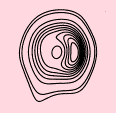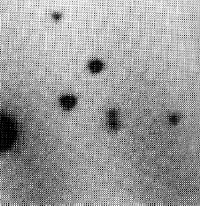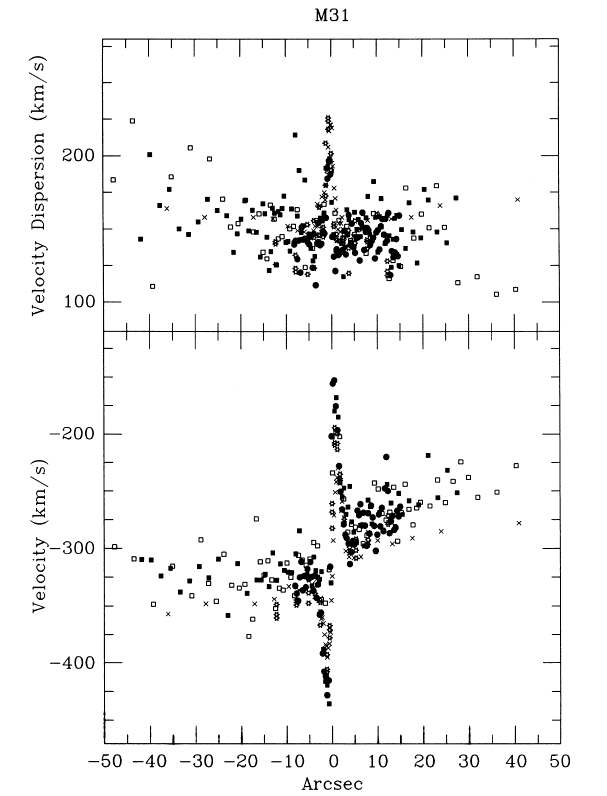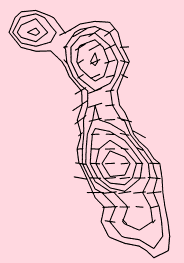 | |||
|
| Home > Public Information > Scientific Highlights > 1989 |
|
in 1989* |
[ STARS | GALAXIES | OBSERVATIONAL COSMOLOGY | OTHER ]
|
|
||
| ||
| ||
| ||
| ||
| ||
| ||
|
|
||
| ||
| ||
OTHER HIGHLIGHTS |
| Spectroscopic observations with
the INT led to the discovery of 3 quasars with a redshift of z > 4. Prior
to these observations only one of these objects was known.
Adaptive optics was employed on the WHT and sharpened stellar images from a diameter of 0.65 arcseconds to 0.35 arcseconds. Faint steep spectrum radio sources, which seem to be systematically more luminous than normal sources, have been optically identified using the INT, and spectroscopically examined using the WHT. The WHT and INT have been used to observe radio-loud quasars in the expectation that they are located in clusters and surrounded by gas. Extensive optical nebulosities have been found around some quasars. Some of this gas may flow in and power the quasar nucleus. The JKT has been used to detect shock-fronts on the concave sides of spiral arms beyond the corotation radius in spiral galaxies. This is consistent with a theory predicting that the spiral arms point in the same direction as the rotation of the galaxy. |
| Top | Back |
|






